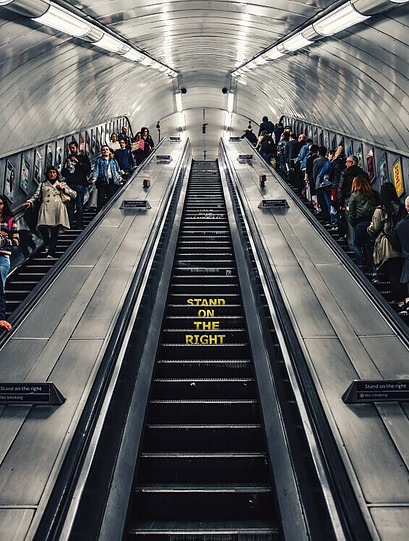Countries That Build Themselves
 Have you ever wondered why there’s a growing trend in the construction of underground shelters? We’re not talking about simple basements or storm cellars here; these are sophisticated, often state of the art facilities designed to withstand extreme events. The increase in the construction of such shelters is fascinating, and it ties back to several global factors.
Have you ever wondered why there’s a growing trend in the construction of underground shelters? We’re not talking about simple basements or storm cellars here; these are sophisticated, often state of the art facilities designed to withstand extreme events. The increase in the construction of such shelters is fascinating, and it ties back to several global factors.
You might think the rise in building underground shelters is a reaction to current global tensions, and you’d be right, but that’s not the whole story. It also stems from a heightened awareness of natural disasters and climate change. This is a phenomenon that transcends borders, impacting people from all walks of life.
Now, let’s compare the past with the present. Historically, civilizations have built underground structures for various reasons, from catacombs and hideouts to military bunkers. Today, however, the motives are evolving. What we’re seeing now is an intersection of protecting civilians, safeguarding critical infrastructure, and ensuring the continuity of governance in the face of both man made and natural calamities.
This article is going to take a closer look at which countries are pushing the envelope in this arena. You might be surprised to find that it’s not just the usual suspects gearing up their below ground fortifications. From the storied bunkers of Switzerland to emerging efforts in other parts of the globe, there’s much to uncover about why nations are digging deep quite literally to protect their citizens.(
Analyzing the Countries Leading Underground Shelter Developments
You might wonder which countries are at the forefront of building underground shelters. The answer’s quite revealing, uncovering a mix of preparation, precaution, and foresight. Countries around the world have varying reasons for investment in subterranean safety from natural disaster preparedness to military strategies.
Switzerland stands out with its mandatory bunkers, having enough shelter spaces for its entire population. This isn’t just about Swiss neutrality, it’s also a reflection of their commitment to civil defense. The Swiss model includes shelters in homes, hospitals, and public buildings, integrated into everyday( structures.
In stark contrast, countries like the United States and Russia have a different approach—focusing on military applications and protecting key personnel. These shelters are less about civilian protection and more about safeguarding government continuity during extreme scenarios.
Norway, known for its sophisticated infrastructure, is also investing in underground facilities. Not only military bunkers but also seed vaults like the Svalbard Global Seed Vault, constructed to protect the world’s agricultural diversity against global catastrophes.
Looking ()at the East, countries such as China and North Korea have their own versions of massive underground facilities, often shrouded in secrecy, but their existence hints at significant investments in subterranean safety measures.
The Architecture of Survival: Designing for Resilience
I’m going to take you through the core elements that make underground shelters more than just holes in the ground. It’s about creating spaces where people can not only survive, but maintain some semblance of normal life during times of upheaval. You’re going to find out about the key architectural elements that ensure safety and functionality in these hidden sanctuaries.
First off, let’s talk structure. Reinforced concrete walls are the gold standard, and for good reason. They have to withstand not just the pressure of the earth above, but also potential blasts and radiation. Moreover, state of the art air filtration systems are non negotiable to safeguard inhabitants from airborne contaminants or biological threats.
Now, consider utility systems. These shelters aren’t just about protection, they need to sustain life. That’s going to include independent water sources, often from underground aquifers, and power systems that can operate off grid. Think solar panels, wind turbines, and backup generators; all are integral to long-term sustainability in a shelter.
What about connectivity? In my opinion, the psychological importance of being able to communicate with the outside world can’t be overstated. Shelters often feature secure internet connections and satellite communications as a lifeline to what’s happening above ground.
But it’s not all about high tech solutions. Natural light, when possible through periscopes or fiber optic systems, plays a crucial role. It’s essential for both physical health and mental well being. And space utilization is a form of art here maximizing every inch of space for storage, living quarters, and communal areas without feeling claustrophobic.
Choose something that resonates with you, but imagine the challenge involved in making a space that’s buried underground feel like home. That’s a tall order, and it’s amazing what designers have accomplished. There’s a lot of opportunity in integrating multi use furniture, hydroponic gardens, and modular design elements that can adapt to the needs of the inhabitants.
The Logistical and Ethical Aspects of Shelter Accessibility
If you’re thinking that an underground shelter is just a place to hide away, think again. It’s also a reflection of a society’s values, particularly when it comes to logistics and ethics. You see, the question of who gets access to these shelters during emergencies is a loaded one, and it’s causing quite a stir globally.
Consider this: during a catastrophe, should shelter access be first come, first served, or should it be reserved for specific segments of the population? Countries building shelters face this conundrum, and the choices they make can reveal a lot about societal priorities and the value placed on human life. There’s an ongoing debate about whether the wealthy, government officials, or the general public should be first in line.
The ethical debate digs deeper into the principle of equality. In an ideal world, everyone would have a fair shot at safety, but the reality is often more complex. A lottery system? Priority for families with children? These are tough calls that countries have to grapple with.
And it’s not just about who, but also about how. The logistics involved in getting a large number of people quickly and safely into underground shelters present their own set of challenges. Are there enough entrances and exits? How do you maintain order in a rush against time? Countries are developing advanced plans and conducting drills to prepare for such scenarios, as the solutions are not always straightforward.
Speaking of being straightforward, let’s now pivot to something equally compelling the obstacles and triumphs in underground shelter engineering. Each project presents unique challenges, and the solutions that surface can be quite ingenious .
.
Engineering Challenges and Innovations
Building underground shelters comes with a unique set of engineering challenges. These structures need to withstand not just natural disasters, but also the potential impact of human made catastrophes. One major hurdle is creating a shelter stable enough to endure seismic events. Engineers are delving into the geology of specific sites to tailor make solutions that can resist earthquakes. Waterproofing is another concern, especially in areas prone to flooding or with high groundwater levels. Advanced materials and construction techniques are being developed to address these issues.
Innovation is at the heart of modern shelter engineering. For instance, there’s increasing use of self healing concrete, which can repair its own cracks, vastly improving durability. Smart ventilation systems are another focus area, essential for maintaining air quality in a confined space over extended periods. There’s also a push for modularity in shelter design, allowing for components to be easily replaced or upgraded as technology advances.
Case studies reflect how these challenges are being met head on. Take the underground facilities in Norway, where they’ve harnessed the power of robust tunneling techniques honed through decades of mountain highway construction. Meanwhile, in desert climates, engineers are experimenting with subterranean cooling systems to make shelters habitable even under scorching heat.
You’re going to find out about the human side of these technical marvels in the next section. Beyond the concrete and steel, there’s a world of planning for the wellbeing of people who might one day call these shelters home. After all, survival is not just about living through a disaster but also maintaining a quality of life both during and after the event.
The Human Element: Psychological Impacts and Community Dynamics
I’m going to address something that’s often overlooked when talking about underground shelters: the human psychological impact. Living under the surface comes with unique challenges, and it’s critical to consider mental health when designing these life saving spaces.
Designing for mental well being isn’t just about adding a coat of paint or a few plants. It involves creating spaces that feel open, ensure privacy, and foster community interactions, which can alleviate feelings of isolation. You’re going to find out about design features like communal areas, adequate lighting, and wayfinding cues that can significantly improve the underground living experience.
This isn’t just about individual well being; it’s also about the community spirit within these shelters. Historically, times of crisis have strengthened community bonds, and underground shelters should be engineered to enhance this dynamic. This includes community dining areas, shared entertainment spaces, and areas for group activities.(
You might wonder how important these communal spaces are. I’ve seen reports from real life accounts of people who’ve lived in such shelters, and the recurring theme is clear: the quality of life significantly increases with spaces designed to bring people together.
Now, this brings the question of how to create an environment that doesn’t just survive a crisis, but helps its inhabitants thrive during prolonged stays. In my opinion, architects and engineers must collaborate closely with psychologists and community planners to curate spaces that address both the physical and emotional needs of residents.
I shoot for the latter when I say that we must view these shelters as more than just a place to survive. They should be spaces where life can continue as normally as possible, considering the circumstances. Your first attempt at integrating these considerations into a shelter might not be perfect, but it’s a necessary step towards a holistic approach.
The Future Landscape of Global Underground Shelter Infrastructure
Looking ahead, there’s a lot of opportunity in the development of underground shelter infrastructures. We’re going to see a blend of advanced engineering, thoughtful design, and international cooperation shaping the survival spaces of tomorrow.(
In my opinion, the trends are clear: urban planning will increasingly include subterranean safe zones. It’s not just about preparing for potential calamities but also about integrating these structures into the daily lives of citizens, ensuring they’re functional, accessible and perhaps even part of our recreational landscape.
You’re going to find out about more innovations emerging as engineers address the challenges of creating resilient substructures capable of withstanding extreme events. From earthquake proof modular designs to shelters that can recycle air and water, the evolution in this field is just getting started.
International collaboration will be key in developing shared standards and protocols for shelter construction and use. This isn’t just a matter of best practices; it’s about pooling knowledge and resources to create a global network of safe havens that can support humanity in its most pressing times.(
Now, what about individual and community preparedness? It’s crucial that educational campaigns and drills become the norm, ensuring that people are shelter ready should the need arise.
This includes looking at the economic models to fund these projects. Public private partnerships, international grants, and community funding initiatives all have a role to play.
If you’re interested in this field, stay informed and perhaps even get involved. Your first attempt at contributing doesn’t need to be your last. It’s an evolving industry with room for everyone from civil engineers and policymakers to community leaders and individual advocates.
As we move forward, it’s important to keep in mind the human element at the core of all these efforts. The goal is to uphold human dignity and safety in face of unpredictability, strengthening not just our structures but our global solidarity.
Last Word
Now, what about individual and community preparedness? It’s crucial that educational campaigns and drills become the norm, ensuring that people are shelter ready should the need arise.

